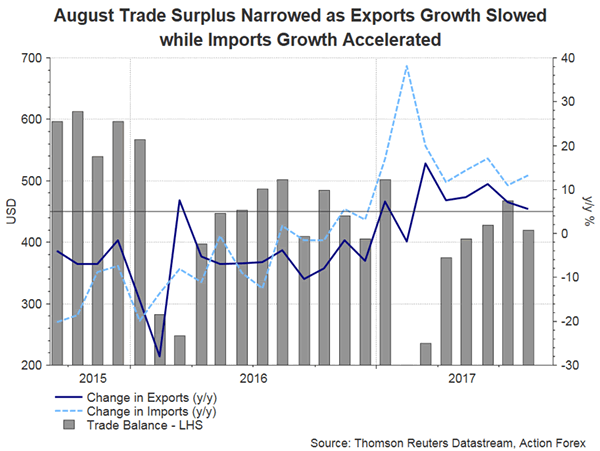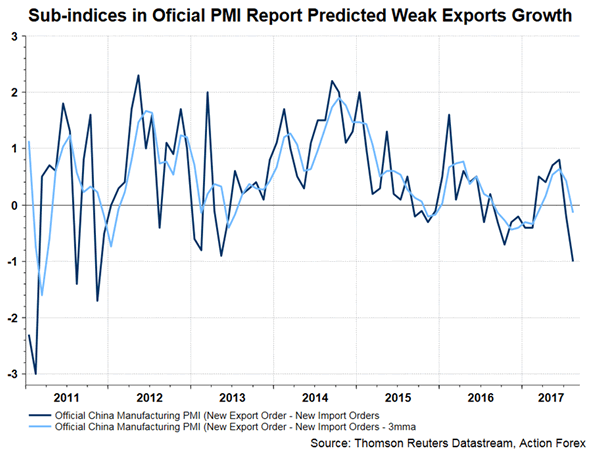August data further evidenced that China’s economic growth has peaked in the first quarter. Following the sharper-than-expected slowdown in growth in July, the latest set of macroeconomic data also surprised to the downside. The moderation was a result of the government’s tighter monetary policy in an attempt to curb excessive investment in certain areas, such as real estate. Renminbi’s appreciation against US dollar since the beginning of the year probably has weighed on exports. This leads the PBOC to loosen capital control which has been adopted over the past years to prevent renminbi from severe depreciation.
Industrial production expanded +6% y/y in August, missing consensus of +6.6% and July’s +6.4%. The deceleration in IP growth was unexpected. Indeed, the strong manufacturing PMI had led some to forecast a higher-than-consensus growth. The official manufacturing PMI rose to 51.7 in August, compared with consensus of 51.3 and July’s 51.4, as driven by strong production and new orders. The Caixin/Markit index also soared to a 6-month high of 51.6 on robust demand. Retail sales growth moderated to +10.1% y/y, form +10.4% in July. The market had anticipated an improvement to +10.5%. Urban fixed assets investment rose +7.8% in the eight months through August, decelerating from +8.3% in the first 7 months of the year. The slowdown came in much more than expectations of +8.2%
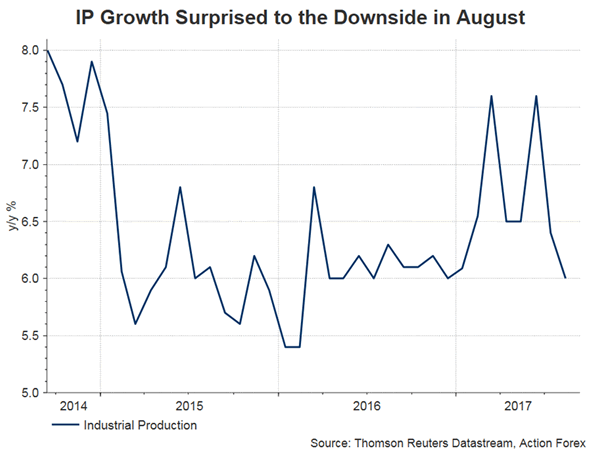
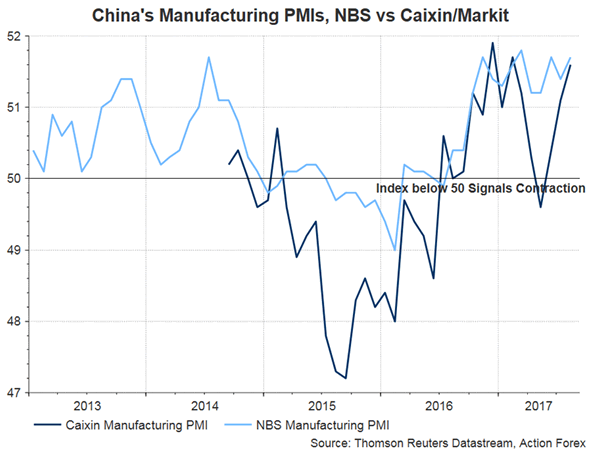
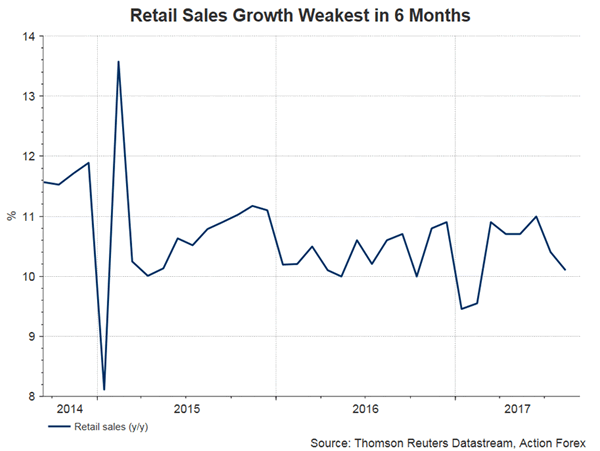
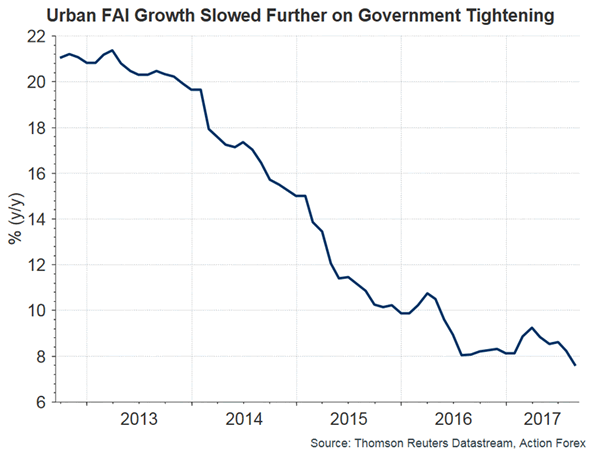
Inflation
Due last week, China’s CPI and PPI surprised to the upside. Headline CPI improved to +1.8% y/yin August from +1.4% a month ago. The market had anticipated a rise to +1.6%. The acceleration was mainly driven by one-off factors such as the rises in egg and vegetable prices due, respectively, to polluted egg incidents overseas and flood. Excluding volatile food and energy prices, core CPI picked up to +2.2% y/y in August, from July’s +2.1%. PPI inflation accelerated to 6.3% y/y, from +5.5% in July. This came in much higher than consensus of +5.7%. the increase was driven by the rally in metal prices. The government’s upcoming output curtailment in steel production has frontloaded production of the metal. This has raised the demand, and hence the prices, of base metals (such as nickel and iron ore) related to steel production. Meanwhile, the government’s plan to ban imports of scrap metals, including copper, from the end of 2018, has lifted demand for the refined ones.
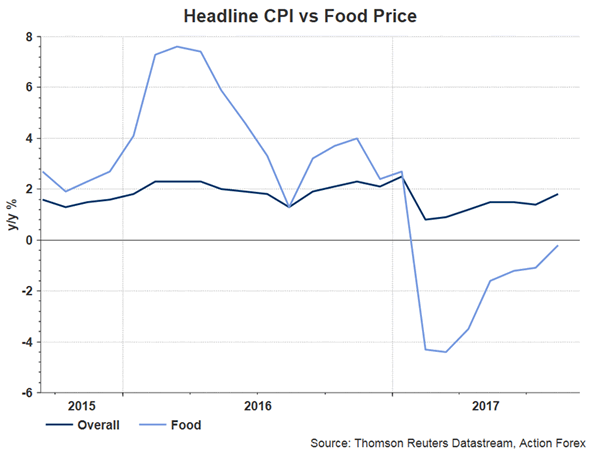
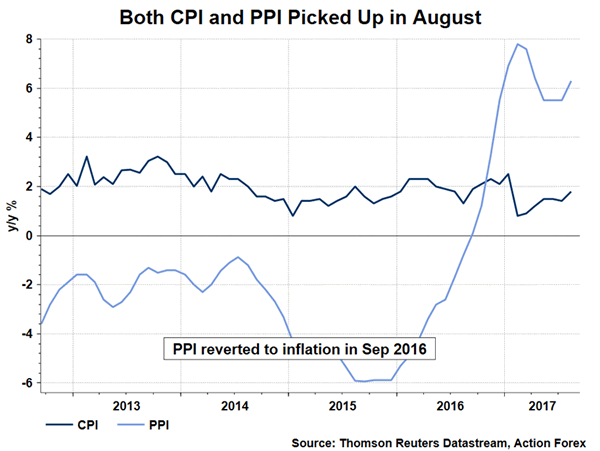
The August trade report sent mixed messages. Trade surplus narrowed to US$ 42B from 46.7B in July, as the growth in exports was overshadowed by that of imports. Exports increased +5.5% y/y, moderating from +7.2% in July. Import growth accelerated to +13.3% in august, from +11% in July. This scenario, weaker exports growth but strong imports growth, was indeed “predicted” in the new exports order and imports sub-indices in official PMI report. PBOC announced last Friday to cut the FX exchange forward reserve ratio from 20% to 0%. The rule was implemented in 2015 when renminbi received massive selloff after the government abruptly depreciated its currency by -2% on August 11, 2015. The move signaled that the government is less concerned about capital outflow as renminbi has steadily risen against the US dollar over the past several months, amidst the latter’s broad-based weakness. It also suggested that the government does not want to see renminbi to go much higher as it can affect exports, as evidenced in the August trade data.
